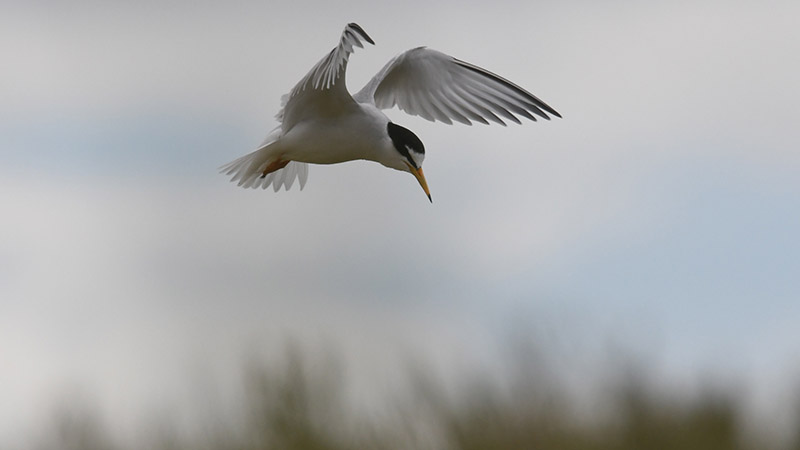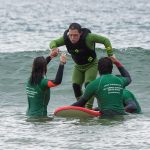By Luis Teves Costa
On any day, in winter or summer, come rain or shine, the Algarvian coast is blessed with a staggering number of coastal birds. Beaches, cliffs, rivers and lagoons are some privileged sites to spot these animals.
You may not necessarily be an experienced birdwatcher (I know I’m not!) but keep your eyes open and you will be surprised with the diversity of species and also some unexpected birds we can see here.

Flamingos and spoonbills are easily spotted in lagoons and salt marshes for their colour, size and shape but look closely and you will probably spot a cormorant (Phalacrocorax carbo) fishing in what looks like a water hide and seek game. See them dive and guess where they are going to emerge. When they do, they often have something in their bills but not for long … gulp! These dark birds have webbed feet and are perfectly adapted to swim underwater and catch fish. When they are not fishing, they are often found perched in their trademark ‘batman’ position, with wings open and basking in a sunny spot. They also seem to enjoy the quiet sheltered marinas and harbours and here you can normally see them fairly close up so that you can admire their big green eyes and glossy bronze/black markings on their back feathers.
On the beachside, look out for the small waders. Even if you cannot identify the different species, you will soon realise that these birds are quite tolerant towards fellow waders especially when feeding in rock pools. You can easily see different sized and colour birds feeding together such as plovers, turnstones, dunlins or curlews. The curlew (Numenius arquata) is the largest of Europe’s waders and is distinguished by its long-curved bill adapted to pick up worms, crustaceans, molluscs and other small invertebrates.


Sometimes, you may also see a blue ‘bullet’ darting in a straight line in front of you. This can only be a kingfisher (Alcedo atthis). It came as a surprise to me when I first spotted a kingfisher by the seaside. The Portuguese name suggests that it is mainly a river dweller – Guarda Rios – which translates to river guard or river guardian. Especially during winter months, this electric blue little bird chooses rock pools with clear water, giving good visibility, to dive in and catch his prey, mainly of little fish.
Sanderlings (Calidris alba) are easily identified on sandy stretches in groups running in and out of the waves washing in the sand. They do this to pick small crustaceous and little organisms that are exposed by the surf wash.

In the air, look out for the acrobatic terns – little terns and common terns (Sternula albifrons and Sterna hirundo, respectively). Both species are similar in appearance and behaviour. Little terns have a white forehead, yellow bill with a black tip and yellow legs, whereas the larger common tern shows a red bill (also with a black tip) and red legs. These birds have a white underside, a predominant pale grey colour on their back feathers and a distinct black cap. Terns will hover above their prey and once they have selected a target, they plunge-dive, hitting the water often with a big splash. This behaviour takes place on lakes, lagoons, marinas, out in the open sea and also very close to the beach where you can fully appreciate their diving abilities at close range.
The bottom line is that, wherever you are along the Algarvian coast and no matter the time of the year, you can always count on the presence of some amazing birds, their exuberant colours and remarkable performances.













